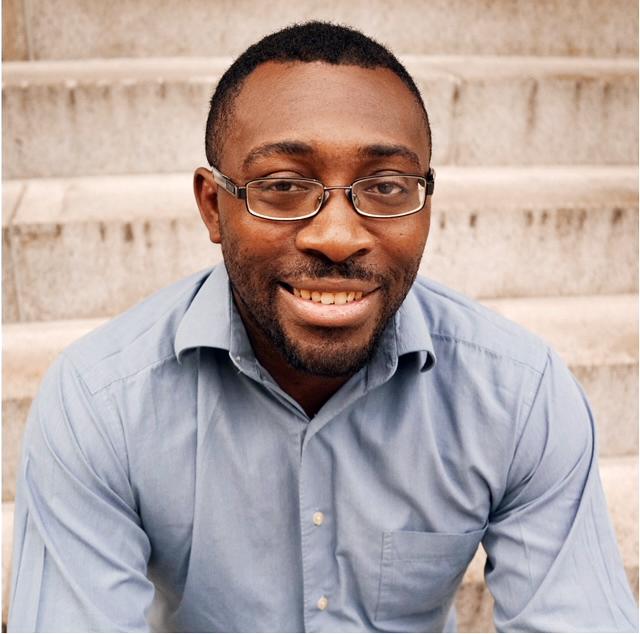This is the remarkable story of HIV advocates who are actively pursuing what will be one of the most extraordinary accomplishments of our time: the development and distribution of an HIV vaccine. The vaccine presents a unique opportunity to provide durable and strong protection against new HIV infection. This narrative will encompass intricate scientific endeavors, political engagement, adaptability, innovation, and, most importantly, the involvement of people through the actions of champions. These dedicated champions tirelessly work to ensure your voices are heard, and your interests are prioritized in the global mission to eliminate HIV as a public health threat.
Imagine having a preventive tool that not only offers defense against HIV infection but also helps generate new knowledge that advances HIV treatment and the potential for the cure of HIV. These groundbreaking scientific achievements are the primary objectives of the field and the reasons why champions and advocates continuously push the boundaries of current scientific knowledge. We advocates act as intermediaries, watchdogs, and custodians of the community's experiences. We closely monitor and report on the progress of research, breaking down the science into digestible chunks of information enabling communities to keep abreast of developments. We amplify the strength of the community and support the design of prevention options that fit people's needs. We support the advancement of science and clinical trials in ways that makes them responsive to the needs of those who need the products.
This is the role of an advocate and the essence of the HIV Vaccine Advocacy Research Group (VARG). We represent the diverse perspectives of people around the world, bringing this diversity to influence the rapidly evolving field of HIV vaccine research and development. We envision a generation free from AIDS through the receipt of HIV vaccine shots. We see this impact on millions of lives globally and the transformative potential this has on nations' economies. Our many years of experience enable us to offer honest perspectives on advancements in the HIV vaccine field. Our insights support developing a lasting, effective, and accessible HIV vaccine. We keep abreast with the latest developments in vaccine science. These are the tales of VARG, the first-hand accounts from the frontline of the global quest for an HIV vaccine.
Join us on this extraordinary journey as we strive to create a future unburdened by the challenges of HIV, united by the power of advocacy and the potential of a vaccine.
In their own words: Six advocates speak out
What would you say is the state of the HIV vaccine research in your country?
TIAN: HIV vaccine research has largely stalled in the region with an urgent need to finance innovative and locally led R&D. Recent steps by USAID to support this critical work is only the beginning. We must continue to pose the hard questions of our own governments about their role—or lack thereof—in moving the field forward.
NTANDO: With no large-scale trial happening, there’s a focus on small-scale studies like bNAbs as a pathway to HIV vaccine and other approaches like experimental medicines. There’s no hype about HIV vaccines as it was when there were large-scale trials.
MORENKIE: Nothing ongoing at the moment. In the past, we worked on preparing the community in readiness for an HIV vaccine to facilitate fast uptake when developed. Right now, community engagement around HIV vaccines is extremely low, just like other HIV prevention activities.
UDOM: The state of the HIV vaccine research in Thailand is, at best, stagnant. Only one phase 1 trial (RV 546) uses the same vaccines from RV 144 and is boosted with 2 adjuvants. Currently, there is no new HIV vaccine candidate being studied in Thailand. The news on HIV vaccine research is nil. No update about ongoing studies related to RV 144 for HIV advocates and the public. HIV researchers in the country are focusing on long-acting PrEP. Very few are working on
MATT: HIV vaccine research. HIV vaccine research has solid roots and connections as one of the prime funders of research endeavors worldwide through its multiple trial sites. Within the U.S., early-stage research on the HIV vaccine thrived. Now, HIV vaccine research is not a big highlight for research in the U.S. because of the obsession of researchers with chasing new and shiny issues. It’s hard to think of dealing with the older challenges that were never entirely welcome.
MAUREEN: The momentum around HIV vaccine research appears to be waning gradually. Much of the attention and effort is directed toward introducing new products, such as CAB-LA, [long-acting cabotegravir] on the market. The inclusion of HIV vaccine research on the agenda during most HIV prevention meetings is minimal, if not absent.
What’s one hope you have for the HIV vaccine research this year?
TIAN: That Africans meaningfully take charge of the R&D space on the continent and never neglect to make concurrent and related investments in meaningful—not tokenistic—community engagement.
MORENKIE: That we see some progress with ongoing research and new research on an HIV vaccine using lessons learned from COVID-19.
MATT: What I hope for in this next year from the field is a clear direction and set of trials that are moving forward. Yes, we had setbacks with these last efficacy trials. However, we now know more than ever about trials, the acceleration of new science, and how to truly begin decreasing the amount of downtime when moving to successful new science and available new opportunities.
NTANDO: I don’t have much hope, really. It would be great to have a clear conversation about how a country can support HIV vaccine research, but candidates are needed to have that conversation.
UDOM: Hope for 2023: mRNA HIV vaccine phase 2/3 trial, and additional and new HIV vaccine candidate in clinical stages. HIV vaccine that is designed for all clades; HIV vaccine with simple regimens—no more than four doses, a single vaccine (no prime vaccine). Good news from the interim analysis of the Mosaico (HVTN 706) trial.
MAUREEN: I am encouraged by the extensive knowledge we have acquired through decades of HIV vaccine research. Nonetheless, without sustained or increased funding for HIV vaccine research, our prospects for meaningful progress are limited.
Drawing from experiences with COVID-19, what considerations need to be accounted for on bringing a new vaccine client to your community?
NTANDO: A collective support and investment for HIV vaccine research and development.
MATT: Education about the trials helps to build community support for science. We need communities to know what’s happening and people who have been in the trial to share information about the safety of the trial and why it could be good for their community. These conversations need to happen before licensure. This must be done in the language understood by respective communities. It’s an amazing challenge to tackle and key to making this endeavor work.
UDOM: Simple vaccine regimen. COVID vaccination efforts in many countries show that a significant number of people won’t come in for boosters. Also, we have to learn to communicate about vaccine science with people better.
MAUREEN: We need increased funding, meaningful community engagement, and strengthened and equitable partnerships.
As the field shifts back to antibodies, what questions still come to mind about them and your community? What are the gaps in knowledge and opportunities for communities to be engaged in this critical discussion.
MATT: A lot of questions come to mind including; How can we effectively engage communities, ensuring their active involvement in HIV vaccine research? Additionally, what measures can be taken to address concerns around acceptability? What strategies must we implement to enhance manufacturing capacity, particularly on the African continent, to meet the demands of large-scale production? Also important to consider: what health system infrastructure will be required to ensure efficient delivery, taking into account antibodies’ unique requirements and complexity.
UDOM: We have to learn from our mistakes about equitable access to vaccines, especially for low-income countries, and develop global delivery and distribution system as early as we can (and secure funds for this).
MAUREEN: I am encouraged by the extensive knowledge we have acquired through decades of HIV vaccine research. Nonetheless, without sustained or increased funding for HIV vaccine research, our prospects for meaningful progress are limited.
NTANDO: Justification for why antibody research is the next best thing in terms of affordability, manufacturing that will address accessibility; how different it is or will be from the longer-acting prevention tools?
From your experience with the COVID vaccine, what do we still need to do for readiness to prepare for an HIV vaccine? How might challenges and barriers be overcome in the future, and what lessons should we be building a pond to build the next generation of success?
MORENKIE: We need to keep the dialogue on HIV vaccine research still coming to mind, each alive and active; this will prevent the delay in uptake. This is readiness for me. We need the synergy of actors also thinking through approval processes and mechanisms, distribution channels, and service uptake management. We will be dealing with adult vaccination which will differ from vaccinations in childhood, and this has supply chain management implications. We also should be looking closely at the implementation of the trials and how data is generated to ensure it is representative enough for global use authorization.
NTANDO: Acceptability is a huge challenge. We have an opportunity to explore what happens in the real. Manufacturing capabilities must be discussed and deliberately planned for, and African or developing countries’; ownership of products must be discussed early.
MATT: We need to fully articulate the significant value that HIV vaccines add, particularly in the light of the availability of other long-acting HIV prevention products already on the market. While existing prevention methods have undoubtedly had additional value to prevent the spread of HIV, vaccines hold several unique advantages. They have the potential to provide long-lasting protection and eliminate the need for continuous product use. Moreover, vaccines can target a broader population, including those facing challenges with adherence to other prevention methods. By emphasizing these distinctive attributes, we can underscore the critical role HIV vaccines play in our comprehensive efforts to combat HIV and ultimately work towards ending the epidemic.
MAUREEN: I am encouraged by the extensive knowledge we have acquired through decades of HIV vaccine research. Nonetheless, without sustained or increased funding for HIV vaccine research, our prospects for meaningful progress are limited.
What’s one thing you think the field is still missing in regard to big ideas to make HIV vaccines a reality?
NTANDO: It doesn’t seem vaccines are generally seen as a need that will fill a gap not addressed by the current drugs.
MORENKIE: How well are we bringing in other actors into the field? We need to expand collaboration in all facets of research and deployment.

Matthew Rose is a dedicated HIV and social justice advocate with over a decade of experience in community engagement, health policy and HIV science, focusing on health equity. He is a director at a global health communications and advocacy consulting firm. Previously, he was Health GAP's lead on federal policy, focusing on such issues as annual appropriations for global AIDS programs, access to essential medicines and rights-based approaches to ending the HIV pandemic. He was also policy and advocacy manager for NMAC, working on federal legislation concerning HIV and health disparities affecting communities of color. Rose is a member of the Vaccine Advocacy Resource Group, a globally recognized, independent team of advocate-led researchers in AIDS prevention.


